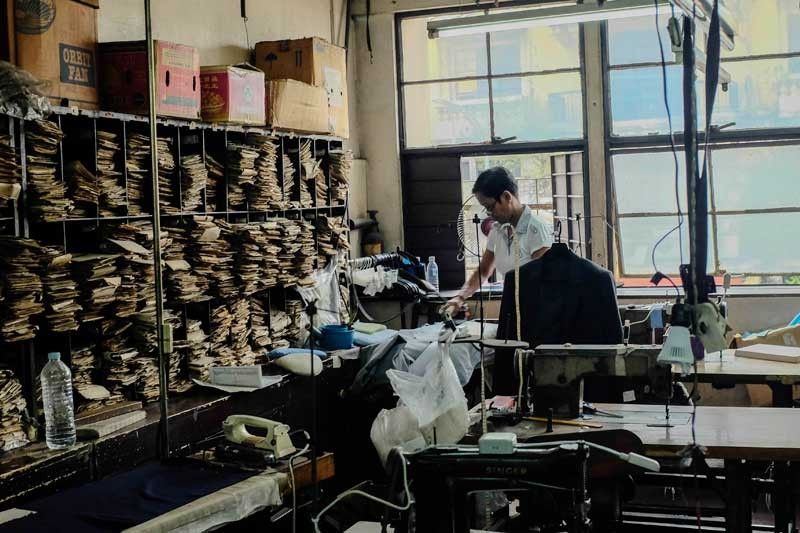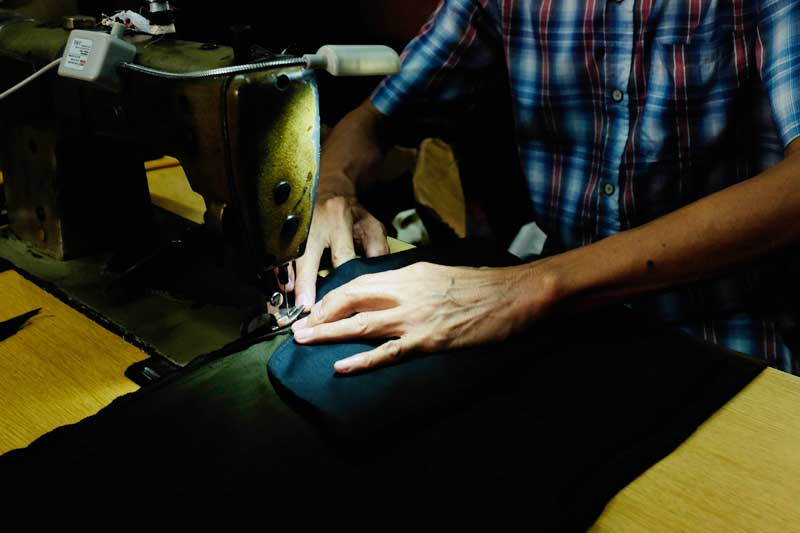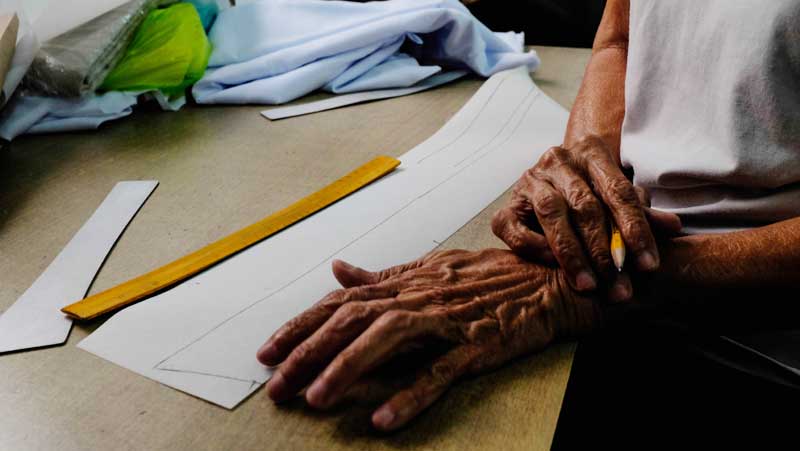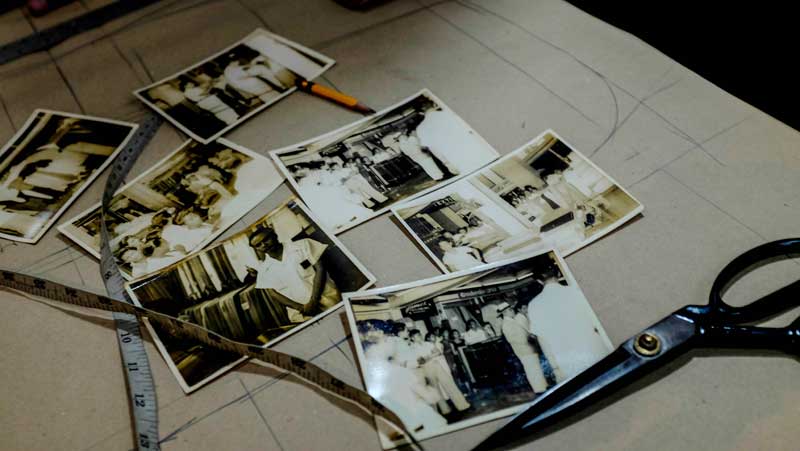A Lost Trade

This tailoring store in the heart of Escolta is one of the last of its kind
To open a shop is easy, to keep it open is an art. — Chinese Proverb
The humidity in Manila is unforgiving; the steam rising from the concrete is oppressive. I cross a busy road to take shade under an art deco building. I had just come from Binondo, Manila (said to be the world’s oldest Chinatown) after consuming an obscene amount of dim sum. Each trip to this side of the city gets bleaker; the usual haunts fade one by one. I skip my normal route and walk east to Escolta. Established in 1594, the name originates from the Spanish word escoltar meaning “to escort.” It runs through the Pasig River from Santa Cruz to Plaza Moraga and Quintin Paredes. Escolta is not only one of the oldest streets in the city — it is the first to hold high-rise buildings in town, making it the main financial district well before Makati city.
During the Manila-Acapulco Galleon trade, Escolta held a large concentration of immigrant merchants, mainly from the Fujian province, in China. Escolta was lined with boutiques and shops selling wares from different parts of Asia, Europe, and Latin America. It is now a shell of itself. Mangy horsedrawn carriages or kalesas idly wait for passengers. Vendors are hunched over random knickknacks made of plastic. For decades it has experienced a drastic decline; the once-flourishing stalls are abandoned and left in ruins. Prime real estate is converted into condominiums that remain vacant upon completion. The rent in the area sees a steady increase.

The sudden in ux of department stores and ready-to-wear clothes has made custom tailoring a dying enterprise in the Philippines.
Past the grit, a lone store stands: “James Tailor, 1948.” No pun intended. A group of kitschy plastic mannequins are on display, impeccably dressed. One is in a tux, the next dummy is in a suit and the last figure is clothed in the Philippine barong (embroidered formal shirt). The shop is clean and colourful from the outside. The main door is left open with an enticing view of vibrant fabrics rolled neatly into shelves on the wall. Plain, printed, striped or with checkers.
A small man stands behind a long glass counter while a lady neatly folds fabric. A couple of old black and white photographs are propped on the higher shelves. The store is owned by Andy Lee, a tall and slim middle-aged Chinese gentleman. A measuring tape is draped across his neck as he sits and cuts a shirt pattern. A stubby yellow pencil rests on a book filled with swatches of garments.
James Textile and Burlington Tailoring was founded in the late 1940s by Mr. Lee Chong Gak. His family originated from China. It is now run by the second generation of Lee’s. The store moved several times around Manila but Escolta became its final home in the 1970s. The family has assimilated into Philippine culture. They employ local tailors and seamstresses. Edwin Libutan, who is in charge of sales, is Mr. Lee’s most faithful employee. He has been manning the shop for over two decades. The textiles are purchased from Manila-based suppliers with most fabrics originating from China and India. Their clientele are professionals, politicians and celebrities — regular patrons through the years.
I run my fingers across the different types of cotton on display. A one-of-a-kind tailored suit can come in handy for special occasions, a wedding, or maybe a funeral. Always best to live and leave the world in style!

Mila Enacin a petite elderly lady in her mid-60s first learned to sew as a teen in the southern island of Dumaguete. She worked as a teacher and decided to return to sewing after retiring.
Tailoring is a highly respectable trade and skill. The craftsmanship required to create, alter and repair garments is a tedious one to undertake. The sudden influx of department stores and ready-to-wear clothes has made it a dying enterprise in the Philippines. The rich can afford custom tailoring and clothing from high-end designers. The middle class are forced to purchase retail mass-produced garments with inconsistent sizes. The poor head to thrift stores.
Rickety steps lead to a brightly lit and well ventilated work space. Antique cabinets with clear glass doors hold suits and coats ready for pick-up. An adjacent room serves as a small makeshift kitchen. A large area is also on hand for fabrics to be soaked and dried.
Mr. Lee employs a total of six people. He cuts his own patterns for clients. “I love my job,” Florencia Serrano says. She has been ironing suits for the past 18 years. The demand for the trade is low and there are few people left who have knowledge in the process of suit making. The expert cutters have found more work for themselves abroad. Children of skilled tailors and seamstresses have no interest to learn the craft.
Mila Enacin, a petite elderly lady in her 60s, first learned to sew as a teen in the southern island of Dumaguete. She worked as a teacher and decided to return to sewing upon retiring. Two men work intently using turn-of-the-century machines. A line of windows looks out to a fabulous 1930s building as a dated fan blows in the corner. A wall with wide shelves is filled with stacks of brown paper.

Photographs of the first James Tailoring in the 1940s.
“Patterns,” the tailor explains. Each individual who has patronized the store has his or her own paper pattern with their specific measurements. Left to right, labeled A to Z. “We keep them for a minimum of five years. As long as people return for a suit, they have a place.”
In the age of advanced technology and machinery, James Tailoring is a look back into another world. Local enterprises dispose of their workers every six months. Their employees live within the community of old Manila. All are above the age of 50 with a 65-year-old seamstress being the oldest. Age has never been an issue with good tailoring.
“There’s a Chinese saying, you know: We’ll never get fat with what we do.” Mr. Lee chuckles.
“You mean rich?” I ask.
“That, too. We’re just keeping up with what my father started. It’s not how much you earn, it’s how much you save and love what you do,” Mr. Lee says as we walk towards the door.
After all, the goal is to live a life of integrity; even though, sometimes, you may feel like you’re hanging on by a thread.
James Textile/ Burlington Tailoring is located at 437 Escolta St., Sta. Cruz, Manila (+632)736-3133.
Follow the author on Instagram @shirinbhandari.















